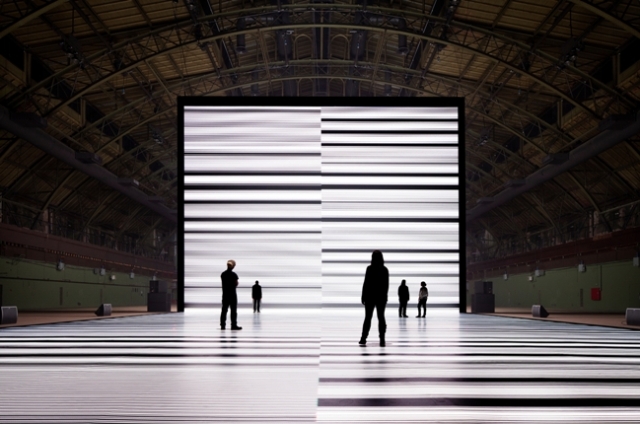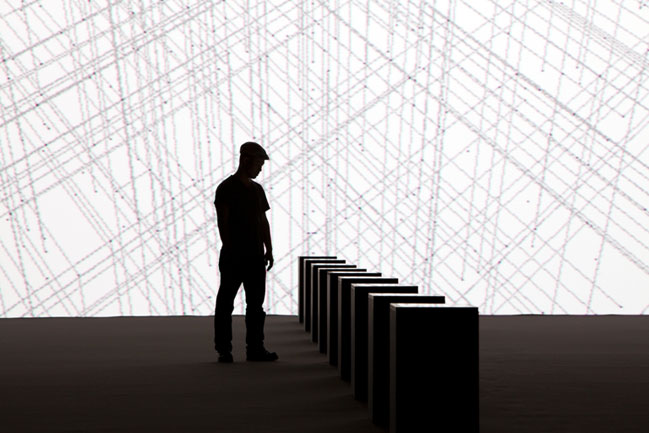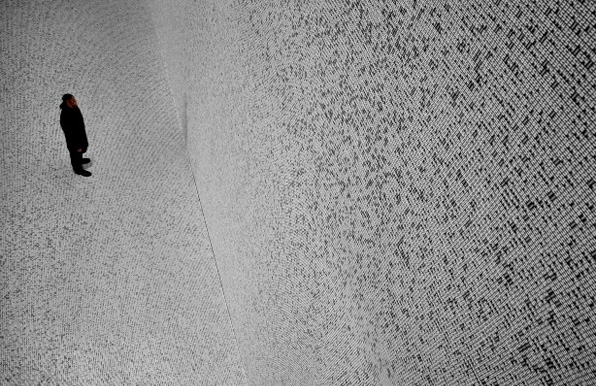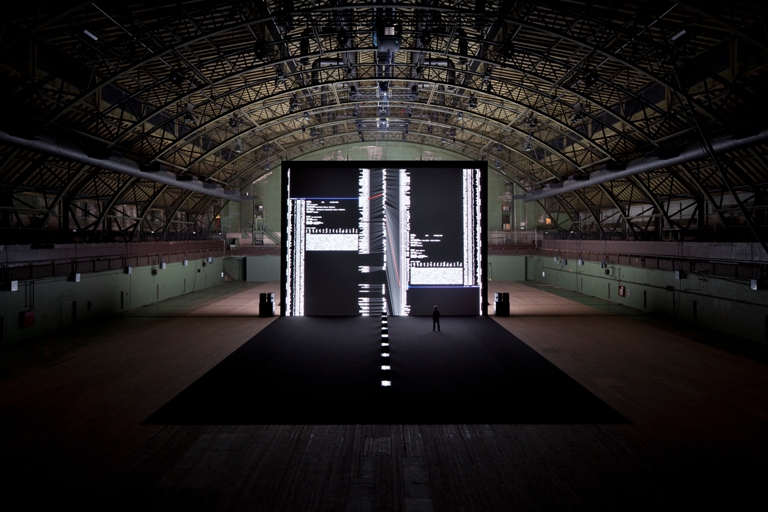Partitura è un software molto interessante che genera immagini in movimento a partire da una traccia audio.
NB: la generazione non è immediata. Partitura è un linguaggio di programmazione con interfaccia grafica nello stile di MAX/Msp e del suo modulo grafico Jitter.
Il software nasce dalla collaborazione di Abstract Birds e Quayola ed è free per uso non commerciale. È stato realizzato utilizzando il toolkit vvvv dal cui sito è scaricabile.

Partitura is a custom software built in vvvv.org to generate realtime graphics aimed at visualising sound. The term “Partitura” (score) implies a connection with music, and this metaphor is the main focus of the project. Partitura aims to create a new system for translating sound into visual forms. Inspired by the studies of artists such as Kandinsky, Paul Klee, Oscar Fischinger and Norman McLaren, the images generated by Partitura are based on a precise and coherent system of relationships between various types of geometries. The main characteristic of this system is its horizontal linear structure, like that of a musical score. It is along this linear environment that the different classes of abstract elements are created and evolve over time according to the sound. Partitura creates endless ever-evolving abstract landscapes that can respond to musical structures, audio analysis and manual gestural inputs. It is an instrument that visualises sound with both the freedom of spontaneous personal interpretation/improvisation and at the same time maintaining the automations and triggers of mathematical precision.
Partitura defines a coherent language of its own for the creation of new contemporary abstractions. It is within this system that Partitura creates worlds that expand from a single dot to multiple galaxies, from minimalism to complexity, from rigid to elastic, from solid to liquid, from angular to smoothness, from tentative to boldness, from calm to agitation, from slow to fast, from desaturated to saturation, from dark to lightness, from predictable to unpredictability. Literally ‘everything’ and its opposite… just like a musical flow.






 Ballentine the bird is a digital drawing about 20,000 pixels tall and 30,000 pixels wide (roughly 20×30 feet @72ppi). She was drawn using one-pixel wide scribble lines colored red, yellow, blue, white, and black. Because she is so big, I’ve used the OpenLayers mapping API (similar to Google Maps) to allow zoom and scrolling features.
Ballentine the bird is a digital drawing about 20,000 pixels tall and 30,000 pixels wide (roughly 20×30 feet @72ppi). She was drawn using one-pixel wide scribble lines colored red, yellow, blue, white, and black. Because she is so big, I’ve used the OpenLayers mapping API (similar to Google Maps) to allow zoom and scrolling features.